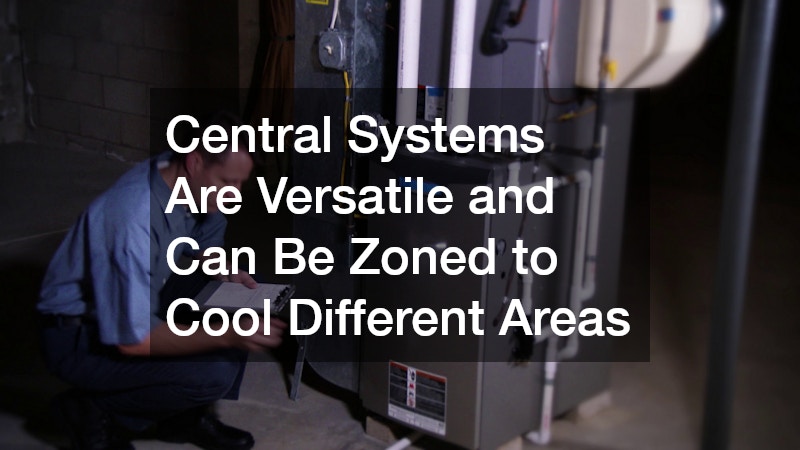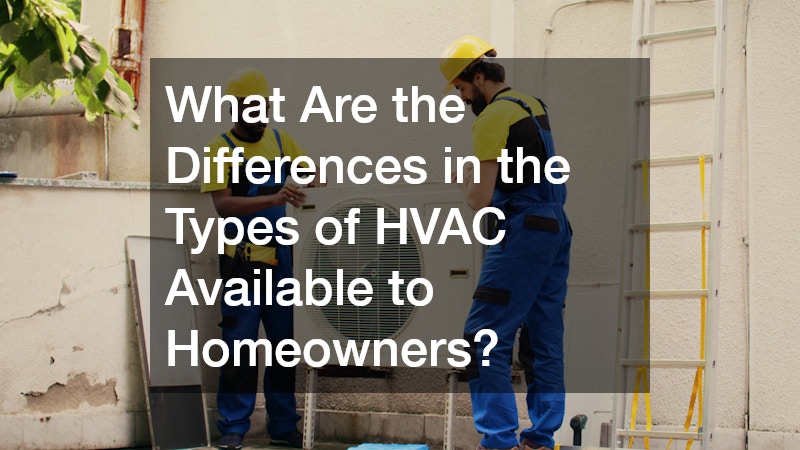The decision to install an HVAC system in your home is crucial for ensuring comfort and energy efficiency. HVAC systems, which stands for Heating, Ventilation, and Air Conditioning, come in various types, each serving different needs and home setups. Understanding the differences can help homeowners make educated choices tailored to their specific requirements.
Central Air Conditioning Systems
Central air conditioning systems are a popular choice for homeowners seeking effective cooling across larger spaces. These systems work by distributing cooled air through ducts, providing a consistent temperature throughout the house. Homeowners often appreciate the unobtrusive nature of central air, with units typically installed outside and requiring minimal indoor space usage. Maintenance is crucial for these systems, as regular check-ups extend the lifespan and maintain efficiency. Annually servicing and cleaning the ducts helps to prevent allergens and maintain indoor air quality.
One significant advantage of central air systems is the ability to combine them with heating through a furnace, making them a comprehensive HVAC solution. However, these systems require a more intricate installation process, often necessitating ductwork, which can be a significant upfront investment. Once installed, central systems are versatile and can be zoned to cool different areas at specified times, maximizing energy usage. When selecting a central air system, it’s essential to consider the SEER (Seasonal Energy Efficiency Ratio) rating to ensure the model you choose is energy efficient. The unit’s size needs to be proportionate to the area it serves, as an undersized unit struggles to cool effectively, while an oversized unit may cycle on and off too frequently.
In terms of maintenance, central air systems require periodic filter changes and professional servicing to check freon levels and ensure everything is functioning optimally. While initial costs may be higher, the long-term convenience and efficiency can outweigh these initial expenditures. Grants and rebates may be available for energy-efficient models, helping to offset the investment costs. Overall, central air conditioning systems offer robust cooling capabilities pursued by many homeowners for their reliability and energy efficiency considerations.
Ductless Mini-Split Systems
Ductless mini-split systems have recently gained popularity, particularly in homes that lack existing ductwork. They are comprised of an outdoor compressor unit connected to one or more indoor air handling units, giving users control over the climate in specific rooms or zones. This zoning ability means different areas can be heated or cooled separately, enhancing energy efficiency and personal comfort. Installation of mini-split systems is generally more straightforward and less invasive than central air systems, often requiring just a three-inch hole to connect indoor and outdoor units. Homeowners appreciate that these systems avoid the energy losses associated with ducts.
Mini-splits are ideal for homes with additions, where extending ductwork isn’t feasible or would be overly complicated. They’re also beneficial in garages, basements, or sunrooms where customized climate control is desired. One potential drawback is the visible wall-mounted units inside, which some homeowners find aesthetically displeasing. However, advancements in design are creating more discreet options to blend with home decor. Efficiency is one of the main advantages of ductless systems, as they allow for direct cooling and heating without the need for energy-wasting ductwork.
The cost of installing a ductless mini-split system can be higher per unit compared to traditional central air conditioning systems, but energy savings over time can be significant. Regular maintenance involves cleaning or replacing filters and checking for leaks to maintain efficient performance. Many homeowners appreciate the silent operation and precise control over indoor climates that ductless systems offer. For those prioritizing efficiency without unnecessary energy usage, mini-splits provide a compelling solution.
Heat Pumps
Heat pumps offer an innovative approach to climate control, capable of both heating and cooling homes. Unlike conventional HVAC systems that generate heat, heat pumps transfer heat from one place to another, making them an energy-efficient option throughout the year. In warmer months, they function similarly to an air conditioner, moving heat from the inside to the outside; during colder months, they extract warmth from the outdoors and bring it inside. For climates with moderate temperature ranges, heat pumps can offer substantial cost savings on utility bills. Their dual functionality eliminates the need for separate heating and cooling systems, simplifying household HVAC options.
There are two main types of heat pumps: air-source and ground-source (geothermal). Air-source heat pumps are more common and cost-effective, utilizing air from external environments. Meanwhile, ground-source heat pumps tend to be more efficient in energy use, yet they come with a significantly higher installation cost due to the earthwork required. A key advantage is that both types significantly reduce carbon footprints, making them attractive options for environmentally conscious homeowners. Depending on the local climate, a heat pump can be supplemented with electric or gas heating for extremely cold days.
Installation considerations for heat pumps include the size of the unit relative to the home and the adequacy of insulation levels in the house. Regular maintenance should include filter changes and annual check-ups to ensure effective operation. Financial incentives in many areas for sustainable energy systems may be available, improving the affordability of heat pumps. They provide a comprehensive solution for individuals looking to streamline their heating and cooling systems into one efficient option. Consequently, heat pumps can be an excellent choice for those aiming for year-round efficiency and sustainability in their HVAC system.

